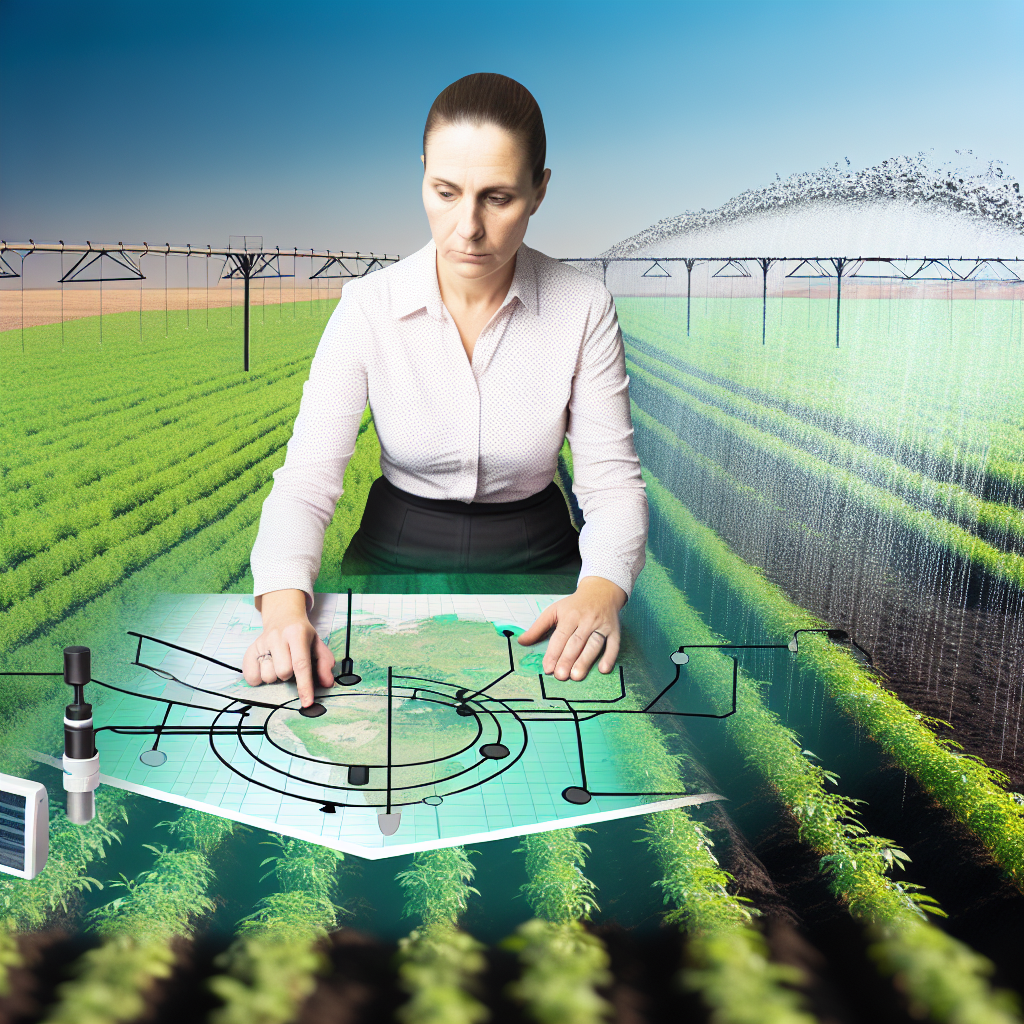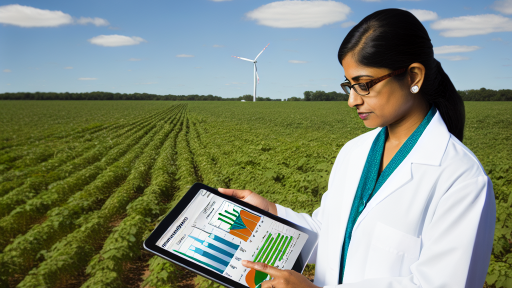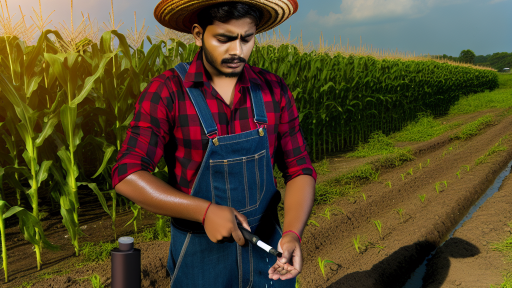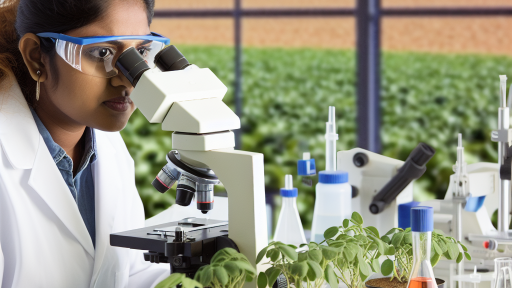Introduction to Carbon Sequestration in Agriculture
Carbon sequestration plays a critical role in mitigating climate change.
It involves capturing and storing atmospheric carbon dioxide in the soil and vegetation.
Agriculture, when practiced sustainably, can significantly enhance carbon storage capabilities.
Understanding carbon sequestration helps farmers make informed decisions.
This approach can lead to healthier soils and increased crop yields.
The Importance of Carbon Sequestration
Reducing carbon dioxide levels in the atmosphere is essential for climate stability.
Sequestering carbon helps improve soil health and fertility.
Healthier soils contribute to better water retention and nutrient availability.
This practice can lead to increased agricultural productivity.
Moreover, it supports biodiversity and ecosystem resilience.
Current Practices in Carbon Sequestration
Farmers use several practices to promote carbon sequestration.
- Cover cropping prevents soil erosion and enhances organic matter.
- Reduced tillage improves soil structure and carbon retention.
- Agroforestry integrates trees into agricultural landscapes.
- Crop rotation maintains soil fertility and reduces pest cycles.
These practices are increasingly adopted as farmers recognize their benefits.
Challenges and Solutions
Despite the benefits, farmers face several challenges in implementing these practices.
Economic constraints may limit the adoption of sustainable techniques.
Furthermore, knowledge gaps about effective carbon sequestration methods exist.
Transform Your Agribusiness
Unlock your farm's potential with expert advice tailored to your needs. Get actionable steps that drive real results.
Get StartedTo address these challenges, education and support are crucial.
Partnerships with agricultural organizations can provide valuable resources.
Future Directions in Carbon Sequestration
Looking ahead, advancements in technology will enhance carbon sequestration efforts.
Research into soil health will reveal new methods for improving carbon storage.
Innovative practices such as biochar application can also be effective.
Ultimately, a collaborative approach among farmers, scientists, and policymakers is essential.
Such collaboration will lead to sustainable agricultural systems that benefit both the environment and food security.
Overview of Irrigation Practices and Their Environmental Impact
Understanding Irrigation Practices
Irrigation practices play a critical role in agriculture.
Farmers widely use various methods to facilitate crop growth.
Common techniques include surface, drip, and sprinkler irrigation.
These methods help manage water efficiently and support yield.
Impact on Water Resources
Irrigation significantly affects local water resources.
Over-extraction can lead to depletion of aquifers.
This depletion adversely impacts ecosystems and biodiversity.
Furthermore, excess water usage can contribute to waterlogging.
Soil Health Considerations
Effective irrigation practices enhance soil moisture retention.
This retention promotes healthy plant growth and vitality.
However, poor irrigation techniques can lead to salinization.
Salinization reduces soil fertility and agricultural productivity.
Carbon Sequestration Benefits
Optimizing irrigation can enhance carbon sequestration efforts.
Healthy soils store more carbon, aiding climate change mitigation.
Moreover, improved practices boost crop resilience and productivity.
This ultimately supports sustainable farming goals and food security.
Technological Advances in Irrigation
New technologies are transforming irrigation practices.
Showcase Your Farming Business
Publish your professional farming services profile on our blog for a one-time fee of $200 and reach a dedicated audience of farmers and agribusiness owners.
Publish Your ProfileSmart irrigation systems optimize water use efficiently.
These systems incorporate sensors and automated controls.
They allow precise watering based on real-time soil conditions.
Community Engagement and Education
Educating farmers about sustainable irrigation is paramount.
Workshops and training programs can enhance awareness.
Collaboration with local agricultural organizations proves beneficial.
Community involvement plays a vital role in achieving sustainable practices.
Benefits of Optimizing Irrigation for Carbon Sequestration
Enhanced Soil Health
Optimizing irrigation practices significantly improves soil health.
It boosts microbial activity and enhances nutrient availability.
Healthy soil captures more carbon from the atmosphere.
This process contributes to effective carbon sequestration.
Increased Crop Yield
Optimal irrigation leads to higher crop yields.
With adequate moisture, plants grow stronger and healthier.
Consequently, they absorb more carbon dioxide during photosynthesis.
This increased yield also supports local economies.
Water Conservation
Efficient irrigation techniques conserve water resources.
By minimizing water wastage, farmers safeguard their supply.
This practice indirectly enhances carbon sequestration.
Drought-resistant crops benefit from improved soil moisture retention.
Reduction of Greenhouse Gas Emissions
Better irrigation management reduces greenhouse gas emissions.
Fewer emissions arise from optimizing water usage and energy efficiency.
As a result, farming practices become more sustainable.
This shift positively influences the overall climate impact of agriculture.
Support for Biodiversity
Optimized irrigation fosters biodiversity in agricultural systems.
Diverse ecosystems enhance resilience against climate change.
Biodiversity also promotes healthier soil and plant interactions.
This synergy helps enhance carbon sequestration capabilities.
Gain More Insights: Effective Climate Resilience Tactics for Farmers
Technological Innovations in Irrigation Systems
Smart Irrigation Technology
Smart irrigation systems utilize sensors to optimize water usage.
They adjust watering schedules based on soil moisture content.
These systems also consider weather forecasts for better efficiency.
As a result, farmers can reduce water waste significantly.
Furthermore, they promote healthier crop growth through precise watering.
Drip Irrigation Advancements
Drip irrigation delivers water directly to the plant roots.
This targeted approach minimizes evaporation and runoff.
Recent innovations have improved drip tape materials and flow rates.
Consequently, growers can cover larger areas with less water.
In addition, this method enhances nutrient absorption by plants.
Automation in Irrigation Systems
Automated irrigation systems streamline the watering process.
They use timers and controllers to manage schedules effortlessly.
Showcase Your Farming Business
Publish your professional farming services profile on our blog for a one-time fee of $200 and reach a dedicated audience of farmers and agribusiness owners.
Publish Your ProfileThis reduces the need for manual intervention in farming.
Moreover, advanced systems can integrate with weather stations.
This integration allows for real-time adjustments based on conditions.
Utilization of Drones
Drones play a vital role in modern irrigation practices.
They can survey fields to identify areas needing water attention.
Using imaging technology, drones assess plant health effectively.
This information allows farmers to optimize their irrigation strategies.
In turn, this minimizes over-watering and enhances resource management.
Water Recycling Techniques
Water recycling has emerged as an essential practice in agriculture.
Farmers can convert wastewater into irrigation sources successfully.
This approach helps conserve fresh water supplies significantly.
Moreover, it promotes sustainability within agricultural operations.
As a net benefit, it also reduces pollution and environmental impact.
Delve into the Subject: Improve Farm Productivity with Carbon Sequestration
Case Studies: Successful Implementation of Optimized Irrigation
Innovative Approaches in California
A vineyard in Napa Valley adopted drip irrigation technology.
This method significantly reduced water usage while improving grape quality.
Additionally, it enhanced carbon sequestration by promoting healthier soil.
The vineyard reported higher yields while using 30% less water.
Transformative Practices in Australia
A farm in Queensland integrated soil moisture sensors into its irrigation system.
These sensors allowed for precise watering according to plant needs.
Consequently, the farm reduced water waste and increased carbon storage.
Farmers noted improved crop resilience during dry seasons.
Success Stories from Europe
A community garden in the Netherlands implemented rainwater harvesting.
This initiative decreased reliance on traditional water sources.
Moreover, it enhanced soil organic matter through continuous irrigation.
The garden served as a model for sustainable practices in urban settings.
Collaboration in North America
A research project in Texas encouraged farmers to optimize irrigation scheduling.
It utilized weather data to inform irrigation decisions effectively.
Participating farms experienced a 20% decrease in water usage.
Simultaneously, the project’s findings contributed to increased carbon sequestration.
Learn More: Solar and Wind Technologies for Sustainable Farming

Best Practices for Soil Management in Relation to Irrigation
Maintaining Soil Health
Healthy soil supports effective irrigation practices.
Implementing crop rotation enhances soil structure and nutrient content.
Cover crops protect soil from erosion and help retain moisture.
Regular soil testing identifies nutrient deficiencies and pH levels.
This testing allows for targeted amendments to improve soil health.
Efficient Water Use
Optimizing irrigation systems reduces water waste.
Drip irrigation delivers water directly to root zones.
This technique minimizes evaporation and runoff.
Using moisture sensors helps determine optimal irrigation schedules.
Showcase Your Farming Business
Publish your professional farming services profile on our blog for a one-time fee of $200 and reach a dedicated audience of farmers and agribusiness owners.
Publish Your ProfileThese sensors provide real-time data on soil moisture levels.
Integrating Organic Matter
Adding organic matter improves soil structure and fertility.
Composting enriches soil while maintaining moisture levels.
Utilizing green manure crops contributes to organic matter buildup.
Incorporating mulch prevents evaporation and moderates soil temperature.
Practicing Conservation Tillage
Conservation tillage reduces soil disturbance and erosion.
This practice retains moisture and enhances soil organic carbon storage.
Minimal tillage approaches also promote microbial health in the soil.
Using cover crops in conjunction with conservation tillage enhances benefits.
Implementing Agroforestry Practices
Integrating trees into agricultural landscapes provides multiple benefits.
Trees enhance biodiversity and improve soil structure through root systems.
They also create a microclimate that helps retain moisture.
Additionally, agroforestry practices can increase carbon sequestration in soils.
Monitoring and Adjusting Practices
Continuous monitoring is vital for effective soil management.
Regularly evaluate irrigation efficiency and soil health indicators.
Adjustments may be necessary based on seasonal variations.
Stay informed about new research and innovative practices to improve efficiency.
Engaging with local agricultural extensions can provide valuable resources.
Discover More: Using Technology to Optimize Water Use on Farms
Monitoring and Measuring Carbon Sequestration Results
The Importance of Monitoring
Monitoring carbon sequestration helps evaluate the effectiveness of irrigation practices.
It provides data needed to make informed decisions.
Regular monitoring allows for the adjustment of techniques to maximize carbon capture.
Methods for Measuring Carbon Sequestration
Various methods exist to measure carbon sequestration in agricultural settings.
Field sampling offers empirical data through soil analysis.
Remote sensing facilitates large-scale monitoring of vegetation health.
Furthermore, soil carbon models simulate carbon dynamics in different conditions.
Instruments and Technologies
Advanced tools enhance the accuracy of carbon measurement.
Soil respiration chambers assess microbial activity and carbon release.
Portable infrared gas analyzers measure carbon dioxide levels in real time.
Combining these instruments yields comprehensive insights into carbon sequestration.
Data Analysis and Interpretation
Analyzing data enables farmers to track progress over time.
Statistical methods help discern trends and relationships between variables.
Data visualization tools present findings in an understandable format.
Such analyses guide farmers in refining their irrigation strategies.
Integrating Results into Practice
The ultimate goal is to integrate monitoring results into daily practices.
Farmers can adopt more sustainable methods based on empirical evidence.
This process fosters continuous improvement in carbon sequestration efforts.
Ultimately, it supports climate change mitigation and enhances soil health.
Future Directions: Research and Policy Implications for Sustainable Irrigation
Identifying Key Research Areas
Research should focus on innovative irrigation technologies.
These technologies can enhance water efficiency significantly.
Showcase Your Farming Business
Publish your professional farming services profile on our blog for a one-time fee of $200 and reach a dedicated audience of farmers and agribusiness owners.
Publish Your ProfileMoreover, studies must examine the impact of soil moisture sensors.
Understanding how these sensors affect crop yields is crucial.
Additionally, researchers should explore crop-specific irrigation needs.
Customized irrigation strategies can lead to more effective practices.
Collaboration Between Stakeholders
Farmers, researchers, and policymakers must collaborate effectively.
Such partnerships can drive sustainable irrigation innovations.
Sharing knowledge among stakeholders fosters better practices.
Moreover, public-private partnerships can expand research funding.
This funding can support projects geared toward sustainability.
Policy Frameworks Supporting Sustainable Practices
Governments must create comprehensive irrigation policies.
These policies should incentivize the adoption of efficient techniques.
Additionally, regulations should support the research and dissemination of findings.
Furthermore, policies must ensure accessibility of resources for farmers.
This includes financial assistance for sustainable technology adoption.
Adapting to Climate Change
Irrigation strategies must adapt to changing climate conditions.
Research should assess the long-term effects of climate variability.
Policy must promote resilience in agricultural practices.
Strategies like rainwater harvesting should be integrated into planning.
Moreover, climate-smart irrigation practices need further exploration.
Monitoring and Evaluation Mechanisms
Establishing robust monitoring systems is essential.
These systems can evaluate the effectiveness of irrigation practices.
Moreover, regular assessments can guide policy adjustments.
Transparency in evaluation promotes accountability among stakeholders.
Furthermore, data collection should encompass diverse agricultural landscapes.
Additional Resources
Harnessing soil carbon sequestration to address climate change …
Optimizing sustainable agriculture: A comprehensive review of …




